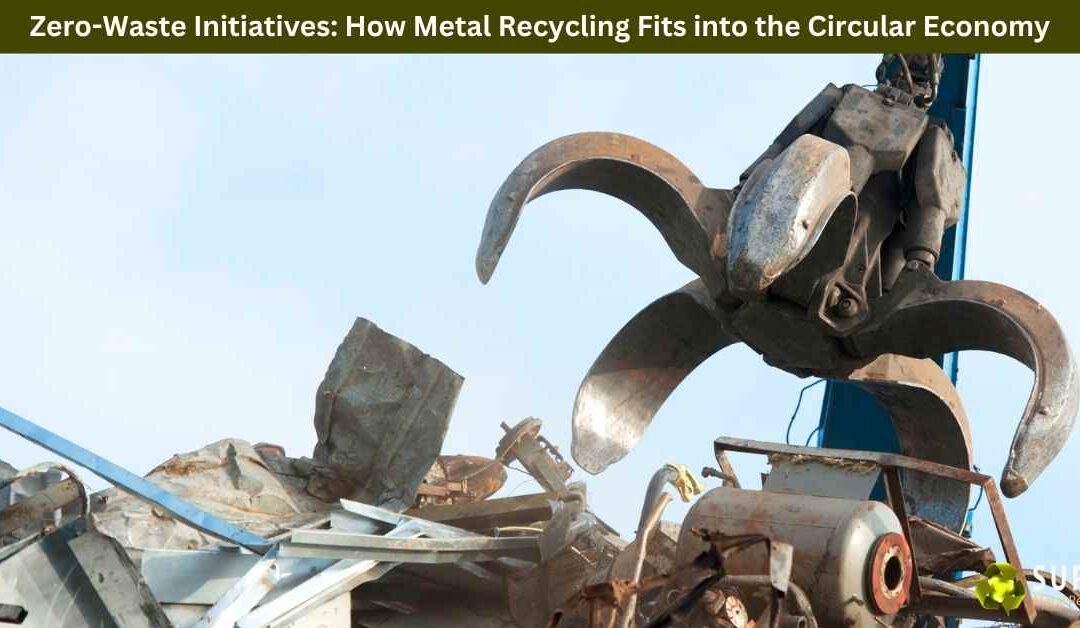If you’ve ever tossed an old frying pan, a rusty bike frame, or even a broken washing machine and thought, “Well, that’s the end of that,” it might surprise you to know—it doesn’t have to be. In fact, in a well-functioning circular economy, that pan or appliance is just at the beginning of a new journey.
Metal recycling is one of the most powerful tools we have in the push toward zero-waste living. It’s not just about preventing landfill overflow or making a bit of extra cash from scrap—it’s about reshaping how we see waste entirely. Let’s break down what that really means.
What Is the Circular Economy, Really?
You’ve probably heard the term thrown around a lot lately—circular economy. But what does it actually mean?
At its core, the circular economy is an economic model that aims to keep materials in use for as long as possible. Instead of the traditional take-make-dispose approach, the circular model encourages us to reuse, repurpose, and recycle. The idea is to design waste out of the system altogether.
In this system, products are created with durability, repairability, and recyclability in mind. And when they do reach the end of their useful life? They’re broken down and transformed into something new, keeping materials in a continuous loop.
Sounds ideal, right? That’s where metal recycling comes in.
Why Metals Are Perfect for the Circular Economy
Not all materials are created equal. Some—like plastics—degrade over time when recycled. But metals? They’re the MVPs of recyclability.
Steel, copper, aluminum, brass—these can be recycled again and again without losing their integrity. Aluminum cans, for instance, can go from your recycling bin to a new can on the supermarket shelf in as little as 60 days. And that process uses up to 95% less energy than producing new aluminum from raw materials.
In other words, when you recycle metal, you’re not just reducing landfill waste—you’re saving natural resources, conserving energy, and cutting emissions in a big way.
Real-World Example: How a Simple Car Gets a Second Life
Let’s take a look at something many of us are familiar with: a car.
When a vehicle reaches the end of its roadworthy life, it’s not just a pile of junk. About 75% of a car is recyclable, and most of that is metal. Auto recyclers remove usable parts, then crush and shred the rest. The metal is separated, melted down, and reused—maybe in construction materials, maybe in a new vehicle, or even in something as unexpected as a kitchen appliance.
Instead of that car ending up as waste, it’s re-entering the economic cycle, fueling new industries and reducing the demand for virgin materials. That’s the circular economy in motion.
Community Impact: More Than Just a Green Label
A lot of people think recycling is just about environmental benefits. And while those are significant, there’s also a strong community and economic angle here.
Metal recycling supports local jobs—from scrap collectors to sorters to industrial processors. And for households, businesses, and industries, it provides an accessible way to contribute to sustainability goals without dramatically changing how they operate.
Take a small construction company, for example. Instead of paying to send scrap metal to landfill, they can partner with a local recycler, recover some of the costs, and reduce their environmental footprint—all in one go.
Breaking the “Waste” Mindset
One of the biggest challenges we face in reaching zero-waste goals is changing how we think about waste in the first place.
For decades, waste was simply waste. Once something broke or wore out, it was out of sight, out of mind. But now we know that with the right systems in place, many of these materials—especially metals—are far too valuable to throw away.
Shifting to a zero-waste approach means recognizing that we’re surrounded by resources, even in the things we used to think of as junk. That old filing cabinet? It might be part of a bicycle next. That bundle of copper wiring? It could find its way into a new smart appliance.
Where We Go from Here
The good news is that more individuals, businesses, and governments are beginning to see the value in closing the loop. From incentivizing recycling programs to designing products with longevity in mind, there’s real momentum building around circular practices.
But there’s still work to do.
As a metal recycling company, we see firsthand how much usable material still slips through the cracks—sent to landfill instead of being returned to the system. It’s why we’re passionate about making recycling more accessible, more efficient, and more ingrained in everyday life.
The more we recycle, the closer we get to a system that doesn’t rely on constant extraction and waste—but one that regenerates itself. One that leaves room for innovation and environmental responsibility to go hand in hand.
Something to Keep in Mind
If we want to build a future where nothing goes to waste, metal recycling has to be a major part of the conversation. It’s practical, it’s proven, and it’s already making a difference.
Whether you’re a homeowner clearing out a garage or a business looking to make your operations more sustainable, you’re part of this movement too. And every bit of metal you keep in circulation helps keep that circular economy turning.
If you are in Dingley Village, and looking for a metal recycling service, this is the best way to visit us.
Super Metal Recycling
345 Frankston – Dandenong Road, Dandenong South VIC 3175
(03) 9706 4909


Recent Comments